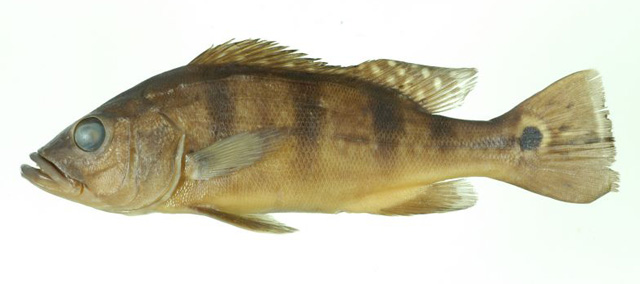| Cichlidae (Cichlids), subfamily: Cichlinae |
| 70 cm SL (male/unsexed); max.weight: 9,000.0 g |
|
benthopelagic; freshwater; pH range: 7 |
| South America: Rio Solimões-Amazonas along the main channel and lower courses of tributaries; Peru, Colombia and Brazil; including Araguari and lower Oyapock rivers north of the Amazon. Probably much more widespread in the lowland Amazon basin. |
|
Diagnosis: This species is similar to C. kelberi and C. pleiozona in having three dark vertical bars on side, presence of a pronounced occipital bar in large specimens, absence of black or ocellated markings laterally on head, and presence of irregular dark blotches on anterior abdominal side. Differs from C. pleiozona by having less scales in a lateral row (68-87 vs. 84-93 in C. pleiozona) and typical absence of dark vertical bar anteriorly on caudal peduncle, and from C. kelberi by absence of light spots on anal and pelvic fins and lower caudal fin (Ref. 57716). |
| Specimens collected were from flood prone areas, but in the Amazon the biotopes are more varied. This fish forays along the shore where small fishes may be concentrated. Juveniles feed on shrimps, while adults are almost exclusively piscivore. Oviparous (Ref. 205). Males are sexually mature after one year while females mature after two years. During reproduction which is not markedly seasonal, large males develop a frontal hump and become territorial (Ref. 35237). Maximum length 80 cm TL (Ref. 35237). |
|
Least Concern (LC); Date assessed: 05 November 2020 Ref. (130435)
|
| harmless |
|
Source and more info: www.fishbase.org. For personal, classroom, and other internal use only. Not for publication.

